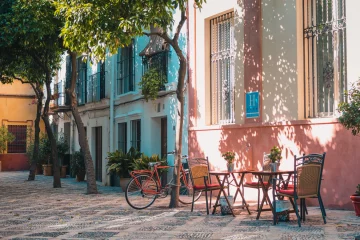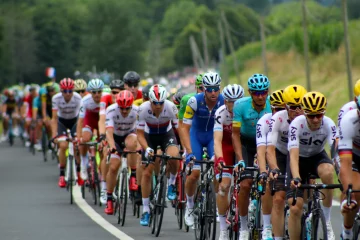Table of Contents
What can you find in Canada?
Canada is one of the most exciting travel destinations in the world. It has many interesting cities, like Toronto, North Vancouver, Montreal or Halifax. But also some of the most impressive nature, which is great for outdoor activities, like hiking, skiing, rafting and fishing.
Canada boasts a wide, diverse culture, which we celebrate with pride, and there is simply no way to see everything in one trip – or even in a lifetime. Full of surprises, Canada is simply the most astonishingly beautiful country in the world.
For those wanting to take advantage of the outdoors, the best time is to visit in the summer. For those wanting to experience everything Canada has to offer, visit in the winter. Temperatures range from plus 40 C in summer to minus 40 C in the winter, so dress accordingly!
Canadian pride
The typical Canadian might be an elusive concept, but you’ll find there’s a distinctive feel to the country. Some towns might seem a touch too well-regulated and unspontaneous, but against this there’s the overwhelming sense of Canadian pride in their history and pleasure in the beauty of their land. Canada embraces its own clichés with an energy that’s irresistible, promoting everything from the Calgary Stampede to maple-syrup festivals and lumberjacking contests with an extraordinary zeal and openness. As John Buchan, writer and Governor-General of Canada, said, “You have to know a man awfully well in Canada to know his surname.”
Languages in Canada
Canada has two official languages – English and French – but there are numerous native tongues as well. Tensions between the two main groups play a prominent part in the politics of Canada, but the native languages are more or less ignored except in the country’s most remote areas, particularly in the Northwest Territories and Nunavut, where Inuktitut, the language of the Inuit, is spoken widely.
Where to go in Canada
Southern canada
Canada’s most southerly region, south Ontario , contains not only the manufacturing heart of the country and its largest city, Toronto , but also Niagara Falls , Canada’s premier tourist sight. North of Toronto there’s the far less packaged scenic attraction of Georgian Bay , a beautiful waterscape of pine-studded islets set against crystal-blue waters.
Quevec
Québec , set apart from the rest of the continent by the profundity of its French tradition, focuses on its biggest city, Montréal , which is for many people the most vibrant place in the country, a fascinating mix of old-world style and commercial dynamism. The pace of life is more relaxed in the historic provincial capital, Québec City , and more easy-going still in the villages dotted along the St Lawrence lowlands, where glittering spires attest to the enduring influence of the Catholic Church.
Across the mouth of the St Lawrence, the pastoral Gaspé peninsula – the easternmost part of Québec – borders New Brunswick , a mild-mannered introduction to the three Maritime Provinces , whose people have long been dependent on timber and the sea for their livelihood. Here, the tapering Bay of Fundy boasts amazing tides – rising and falling by nine meters, sometimes more – whilst the tiny fishing villages characteristic of the region are at their most beguiling near Halifax , the bustling capital of Nova Scotia .
The prairie provinces of Manitoba and Saskatchewan
Back on the mainland, separating Ontario from Alberta and the Rockies, the so-called prairie provinces of Manitoba and Saskatchewan have a reputation for dullness that’s somewhat unfair: even in the flat southern parts there’s the diversion of Winnipeg , whose traces of its early days make it a good place to break a trans-Canadian journey.
Alberta’s wheat fields in Canada
Moving west, Alberta’s wheatfields ripple into ranching country on the approach to the Canadian Rockies , whose international reputation is more than borne out by the reality. The provincial capital, Edmonton , is overshadowed by Calgary , a brash place grown fat on the region’s oil and gas fields, and the most useful springboard for a venture into the mountains.
Eating in Canada
Breakfast is taken very seriously all over Canada, and with prices averaging between $5 and $12 it’s often the best-value and most filling meal of the day. Whether you go to a café, coffee shop or hotel snack bar, the breakfast menu, on offer until around 11am, is a fairly standard fry-up – eggs in various guises, ham or bacon, streaky and fried to a crisp, or skinless and bland sausages (except for Nova Scotia’s famous Lunenburg sausage, a hot spicy version pioneered by settlers from Europe).
The coffee of Canada
Whatever you eat, you can wash it down with as much coffee as you can stomach: for the price of the first cup, the waiters/waitresses will – in most places – keep providing free refills until you beg them to stop. The coffee is either regular or decaf and is nearly always freshly ground and very tasty, though lots of the cheaper places dilute it until it tastes like dishwater.
Quick Snacks in Canada
For quick snacks , many delis do ready-cooked food, including a staggering range of sandwiches and filled bagels. Alternatively, shopping malls sometimes have ethnic fast-food stalls , a healthier option (just about) than the inevitable burger chains, whose homogenized products have colonized every main street in the land. Regional snacks include fish and chips , especially in Newfoundland; Québec’s traditional thick, yellow pea soup, smoked meat sandwiches and poutine , fries covered in melted mozzarella cheese or cheese curds and gravy; and the Maritimes’ ubiquitous clam chowder , a creamy shellfish and potato soup.



0 comentarios